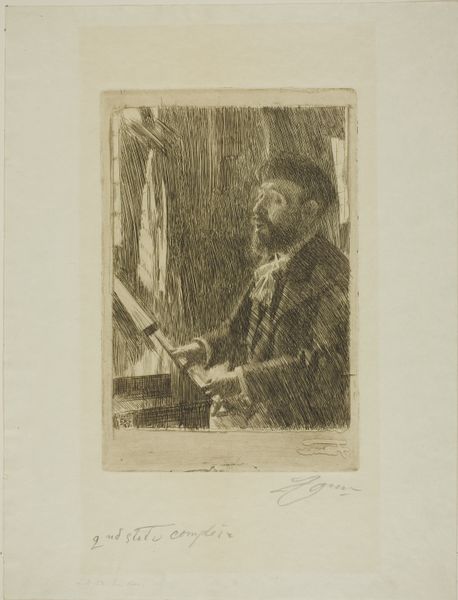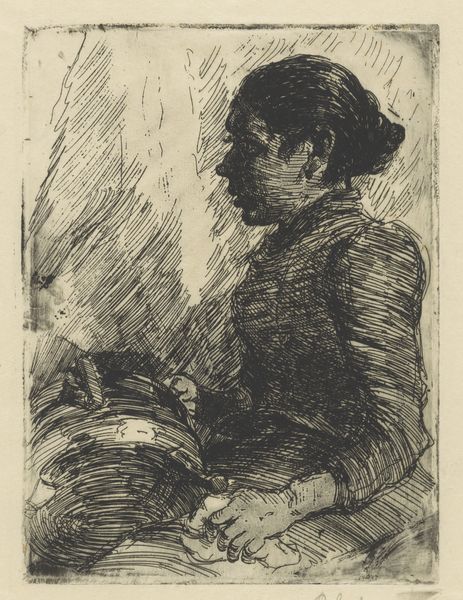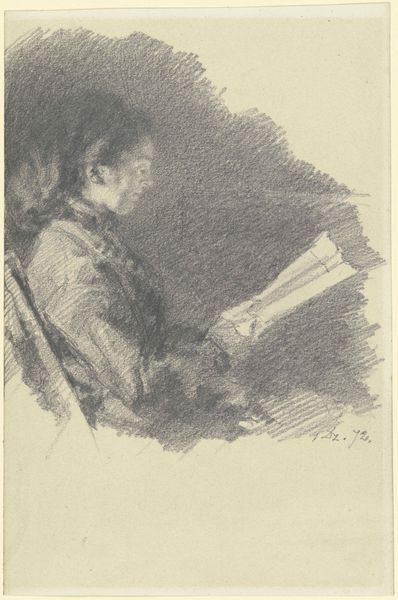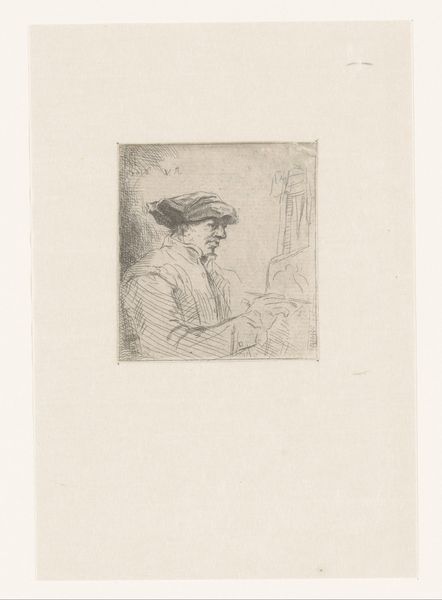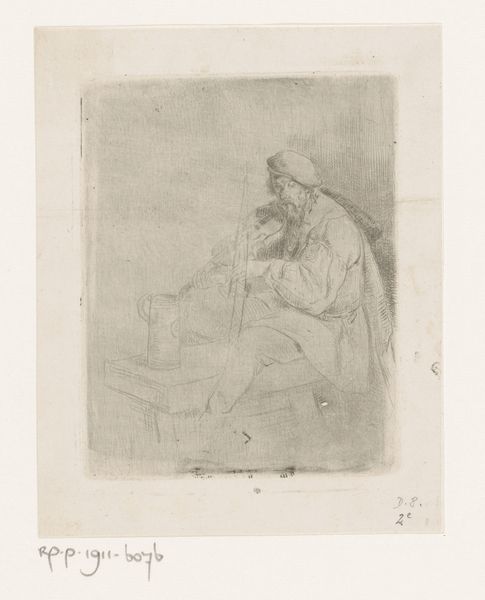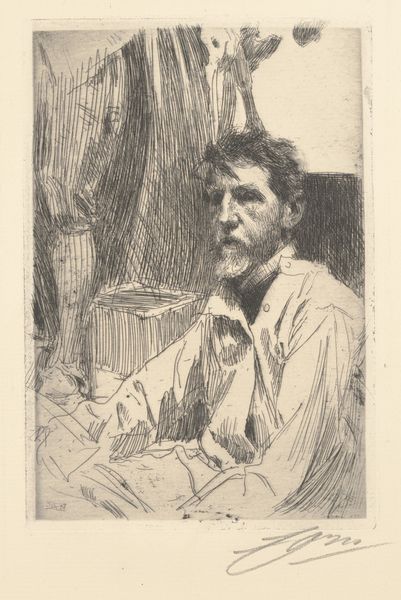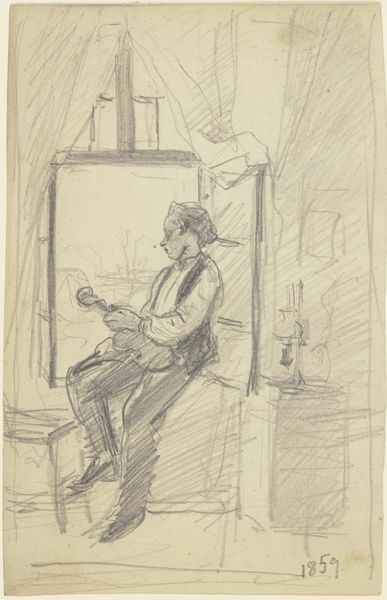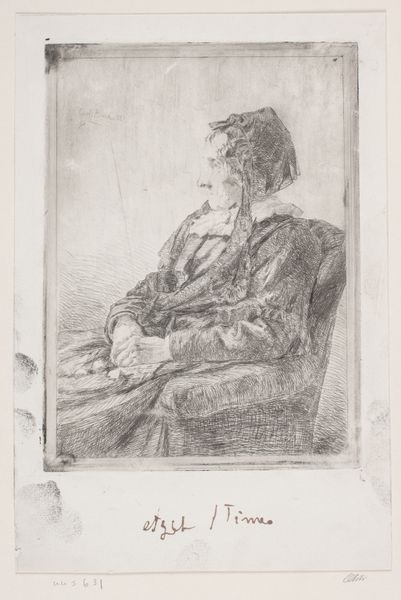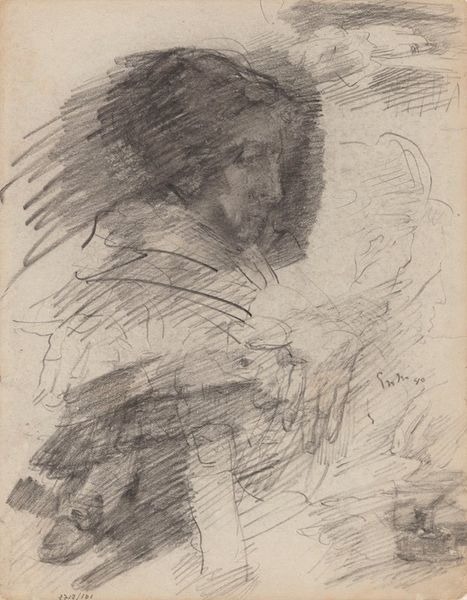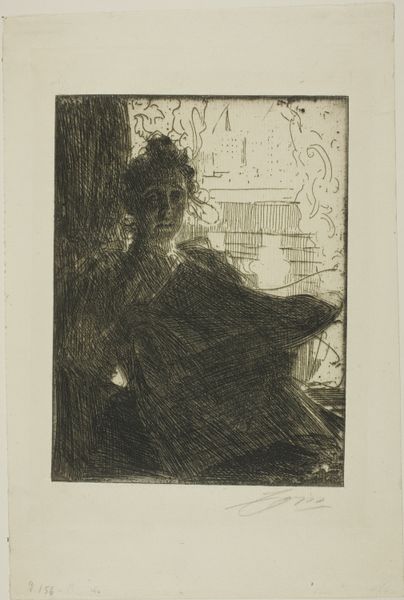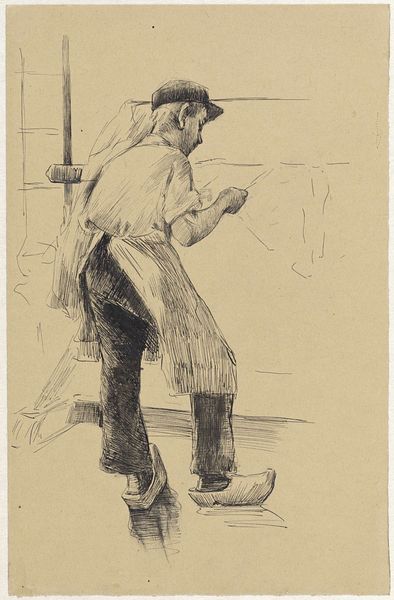
Dimensions: 202 × 151 mm (image); 239 × 161 mm (plate); 398 × 244 mm (sheet)
Copyright: Public Domain
Curator: Anders Zorn's 1891 etching and drypoint, "J.B. Faure," strikes me immediately as a study in texture and value contrast using very deliberate strokes. Editor: There’s a theatrical quality, isn’t there? His upward gaze, the slightly parted lips. It’s as if he’s captured mid-aria. This makes me think about the cult of celebrity that was emerging during this time period. Curator: Yes, absolutely. And if you look at Zorn's use of etching and drypoint, you realize the conscious decision-making involved in portraying this subject as a successful opera singer of his day. It’s all about process; this artwork reflects a deep connection between Zorn’s materials and the society around him. Editor: Precisely, Faure isn’t just a singer; the composition and the way Zorn depicts him transform the figure into a representation of artistic and perhaps even national pride. His elevated gaze—he's looking to inspiration from above. Curator: What fascinates me about the materiality is the multiple steps involved; etching, drypoint, the choice of paper, the deliberate use of light and shadow achieved through ink density. And also, let’s not forget this work existed as a readily reproducible print, distributed on paper for mass consumption! Editor: That’s a great point. Because if you consider the iconographic implications here – the portrait circulated widely– you can really dig into the symbols of power, like his gaze that implies inspiration or higher guidance. His dress suggests bourgeois refinement. The overall affect certainly suggests success. Curator: Right! Mass reproduction changes the nature of reception—how does that transformation play with Faure's status? Each individual print speaks to a different act of labor—each touched, and then consumed, differently. Editor: It is indeed the intersection of symbols of persona with the craft of the printing process—both become significant cultural expressions, telling us how Faure was, is, and wanted to be seen in the late 19th century. Curator: Well, considering the meticulous choices that Anders Zorn made during this period of great shifts, he produced an artwork that remains deeply resonant to me because of its careful treatment and conscious circulation as object. Editor: It’s the perfect combination of artistic skill and symbolic presence, together evoking a moment when artists and celebrity intersected in profound and enduring ways.
Comments
No comments
Be the first to comment and join the conversation on the ultimate creative platform.
